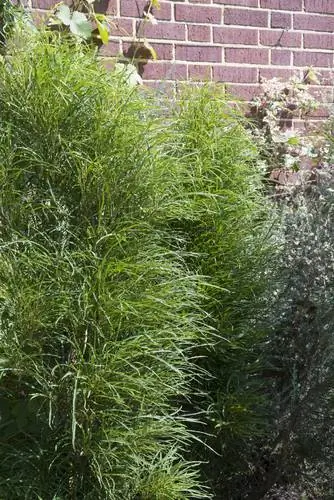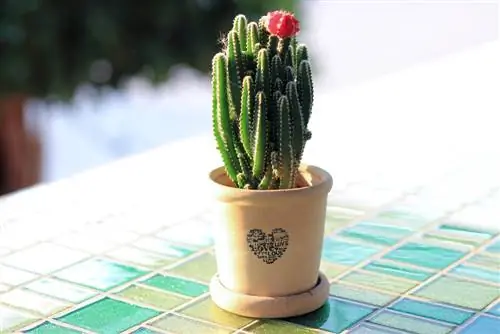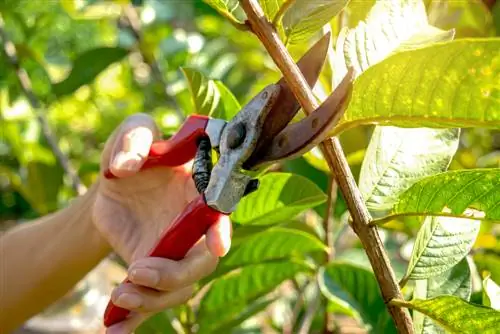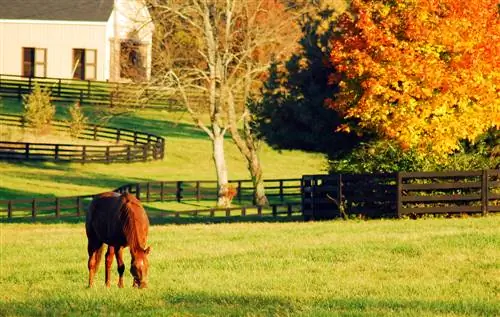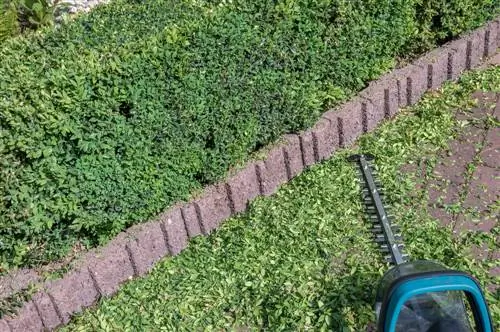- Author admin [email protected].
- Public 2023-12-16 16:46.
- Last modified 2025-01-23 11:21.
If you want to cultivate a columnar dead tree, you can rest assured: the plant is very easy to care for. In order to give the tree a good life, you should carry out the necessary measures conscientiously. In this post you will learn what your fern-leaved buckthorn expects from you.
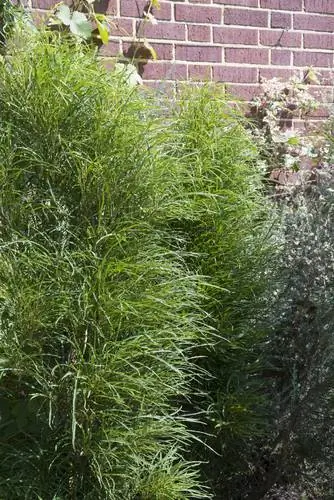
How do you properly care for a columnar dead tree?
The columnar dead tree prefers moist to wet soil and sunny to partially shaded locations. Normal garden soil is sufficient, supplemented with one fertilizer in the spring. Regular watering is important, but waterlogging should be avoided. Bark mulch helps to retain moisture longer.
The right location for the columnar dead tree
A moist to wet soil is optimal for the columnar dead tree. It also prefers a sunny to partially shaded location. In principle, he gets along well with (almost) any environment, but he can't stand rocky places because he doesn't have enough water there. Furthermore, he doesn't want to do without the sun completely.
In short:
- Brightness and sun are important, but there shouldn't be too much of it
- Moisture is a basic requirement, but it doesn't like being waterlogged for too long
Note: You can keep your columnar dead tree in the garden or in a pot.
The ideal substrate
As far as the substrate is concerned, there isn't much to consider. Normal garden soil is absolutely fine. Work in garden compost regularly to increase the nutrient density.
The optimal approach to fertilizing
Fertilize your columnar rotten tree once a year - in spring (€27.00 at Amazon).
Keep the humidity high
If you want to do your columnar dead tree a favor, cover its roots with bark mulch. This means the roots stay moist longer after watering.
Speaking of which: Regular watering is of course important. The tree's root ball should be constantly moist. If it is in a suitable place, such as on the bank of a pond, you need little to no help.
Conversely, you must constantly be active with your watering can if the basic humidity at the location is not sufficient.
But once again: waterlogging is important to avoid! If puddles form and remain standing, you should reduce the amount of watering.
Extra: Transplanting the fan-leaved buckthorn
You may already have a columnar dead tree in your garden and now notice that it is in a very unfavorable location - for example in the shade. In such a case, it makes sense to transplant the bush. Do this step in the fall.
Note: If the fan-leaved buckthorn is in a pot that is too small, you will of course have to repot it into a larger container. At the latest when the root ball emerges from the substrate, it is high time to react. The new pot should be at least one or two sizes larger.

